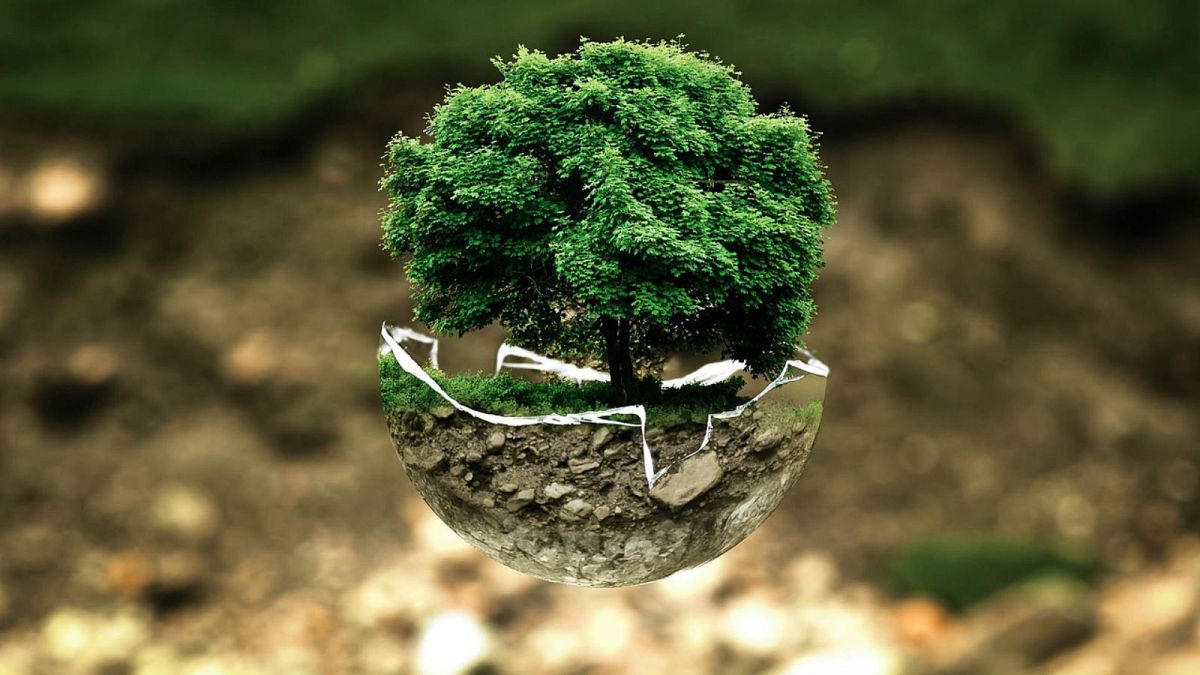While many citizens across Europe were celebrating Easter Monday, April 22 also marked Earth Day. Here's what you need to know about the day for environmental protection.
While many citizens across Europe were celebrating Easter Monday, April 22 also marked Earth Day.
What is Earth Day?
Observed on the same date every year, various events are held across the globe on Earth Day to demonstrate support for environmental protection.
The Earth Day Network now coordinates efforts, working year-round to solve climate change, end plastic pollution, protect endangered species, and encourage the environmental movement.
When did it start?
Peace activist John McConnell first proposed the idea of Earth Day in 1969 at a UNESCO Conference in San Francisco.
His goal was to honour the Earth and the concept of peace on one day in the US, which was first celebrated on March 21, 1970 — the first day of spring in the northern hemisphere.
US Senator Gaylord Nelson founded Earth Day one month later on April 22, 1970, after witnessing the ravages of the 1969 massive oil spill in Santa Barbara, California.
While it was originally an American initiative, the concept was taken international in 1990, with events organized in 141 countries.
What events are happening in Europe?
Institutions across Europe marked Earth Day with various initiatives in 2019.
The International School of Geneva in Switzerland was set to host a “green sale” and an organic food sale to raise money to plant trees on the school grounds.
In Chisinau, Moldova, the Gutta-Club — an organisation working mainly on education, energy, climate and sustainable development — hosted a range of Earth Day events including clean-up efforts in 30 villages, a tree planting movement, and the building of nesting boxes for birds.
ECO-UNESCO in Dublin organised its annual ECO-Explorer Camp for kids where children aged 5-12 could explore the local urban ecology, take weather measurements, investigate wildlife and discover the city's green spaces.
What can I do?
The United Nations published "The Lazy Person’s Guide to Saving the World", in which it lists actions people can take in line with its Sustainable Development Goals.
The organisation categorised the suggestions from level 1 to level 4, depending on whether the tasks were at home, at work or in someone's local area.
Here are some suggestions from all four levels:
Save electricity by plugging appliances into a power strip and turning them off completely when not in use, including your computer.
Stop paper bank statements and pay your bills online or via mobile.
Buy minimally packaged goods.
Get a rug — carpets and rugs keep your house warm and your thermostat low.
Take short showers. Bathtubs require gallons more water than a 5-10 minute shower.
Composting food scraps can reduce climate impact while also recycling nutrients.
Let your hair and clothes dry naturally instead of running a machine. If you do wash your clothes, make sure the load is full.
Eat less meat, poultry, and fish. More resources are used to provide meat than plants.
Plan meals — use shopping lists and avoid impulse buys. Don’t succumb to marketing tricks that lead you to buy more food than you need, particularly for perishable items.
Bike, walk or take public transport. Save the car trips for when you’ve got a big group.
Use a refillable water bottle and coffee cup.


